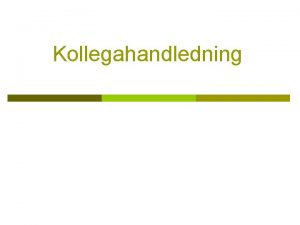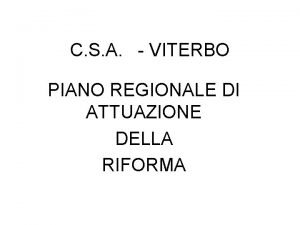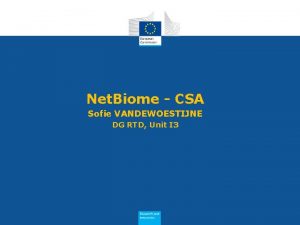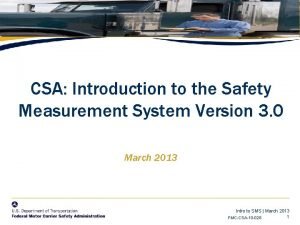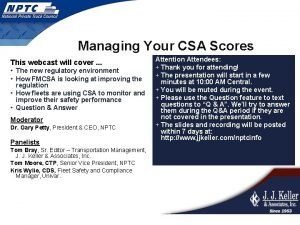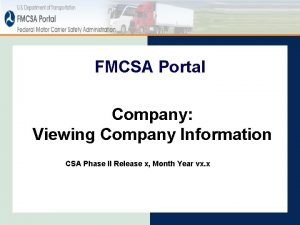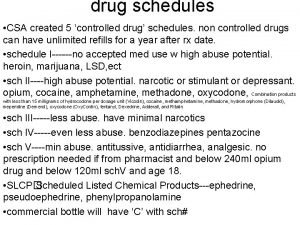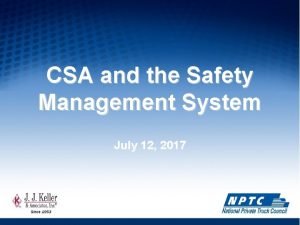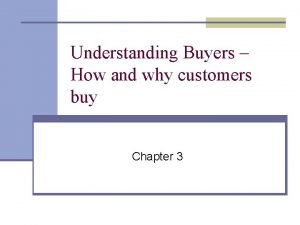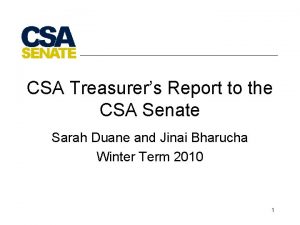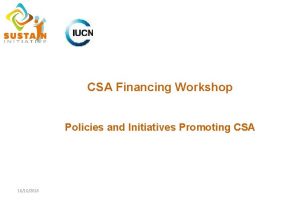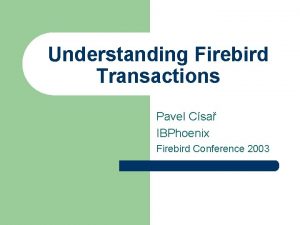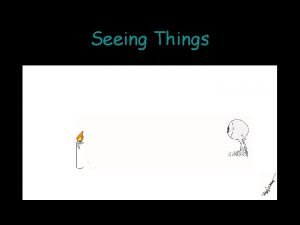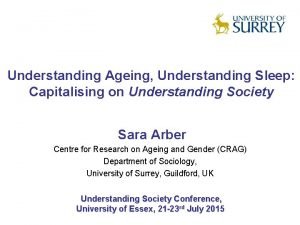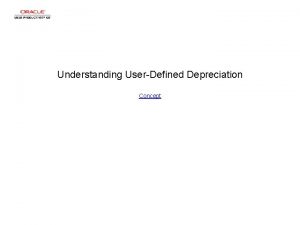Understanding CSA As per WHO CSA refers to








































- Slides: 40



Understanding CSA As per WHO - CSA refers to the involvement of child in any sexual activity: • The child does not understand • The child is unable to give informed consent to; • The child is not developmentally prepared and cannot give consent to; and • Violates the laws or norms of the society

Definition by UNICEF Child Sexual Abuse means contacts or interactions between a child an older or more knowledgeable child or adult (stranger, sibling, parent, or caretaker), when the child is being used as an object of gratification for the older child’s or adult’s needs. Such contacts or interactions are carried out against the child using force, trickery, bribes, threats or pressure.


Incidence • “ 25% of our boys and 40% of our girls under 16 are victim of sex abuse” Pinki Virani, Author of “Bitter chocolate”

Some Shocking Facts Study on Child Abuse’ conducted by the Ministry of Women and Child Development • 53. 22% children reported having faced one or more forms of sexual abuse which mean 1 in 2 children. • 21. 90% child respondents reported facing severe forms of sexual abuse and 50. 76% other forms of sexual abuse. • 52. 94 % were boys (72% said they did not report to any one only 3% reported) and 47. 06% were girls. • 31 per cent of sexual assaults were committed by the victim's uncle or neighbour


Prevalence of sexual abuse-TULIR study Chennai-24 schools in chennai participated

Sexual abuse wrt socio-economic status

Sexual abuse and family type

Different forms of sexual abuse

Who is the abuser- 2007 study, p 81

Disclosure and non-disclosure

Why we avoid talking? Don’t know ? How to talk? What to talk? When to talk? Fear that early education about sex will provoke early interest in sexual behaviors? It cannot happen to my child!

• Dumb Charades

Why children ? Empowered by adults Don’t know ? Physical and mental immaturity to talk? How Nuclear families to talk? What Changed values When Risk taking behaviors in teens. to talk? Fear that early education about sex will provoke early interest in sexual It is always the abuser who is at a behaviors? fault It cannot happen to my child!

Early experimentation in teens

Who is the molester? 90% cases : person known to the child or the family 10% cases: stranger 3/11/2021

Grooming in 3/11/2021

Identifying and targeting the victim.

Gaining trust and access.

Playing a role in child’s life

Isolating the child.

Creating secrecy around the relationship.


Initiating sexual contact. - Test dose ? ?

Reported /Unreported – Threaten

Controlling the relationship.

No reaction from parents – further abuse

Healthy sexualityhealthy society • Girls should learn to say “NO” • Boys should learn to accept “NO” 3/11/2021







ALL IS WELL


 Multas per gentes et multa per aequora vectus
Multas per gentes et multa per aequora vectus Coop per me e per te
Coop per me e per te 60 seconds a minute
60 seconds a minute Longum iter est per praecepta breve et efficax per exempla
Longum iter est per praecepta breve et efficax per exempla Mio diletto
Mio diletto 600 dam/jam berapa hm/menit
600 dam/jam berapa hm/menit Per capita vs per stirpes
Per capita vs per stirpes Nuo vandenyje gimusi vandens bijo
Nuo vandenyje gimusi vandens bijo Per stirpes v per capita
Per stirpes v per capita Moltiplicazioni con numeri periodici
Moltiplicazioni con numeri periodici Catullus 84
Catullus 84 27 miles per gallon into kilometers per liter
27 miles per gallon into kilometers per liter Csa
Csa Csa viterbo
Csa viterbo Rds.csa
Rds.csa Csa tracking system
Csa tracking system Csa al
Csa al Csa of cube
Csa of cube Medidata csa
Medidata csa Ria ia csa
Ria ia csa Csa notorious nine 2021
Csa notorious nine 2021 Csa vs usa
Csa vs usa Pennine vts csa
Pennine vts csa Dg csa
Dg csa Ap computer science recursion
Ap computer science recursion Csa safety measurement system
Csa safety measurement system Ibm csa login
Ibm csa login Csacash
Csacash Surface area of hemisphere
Surface area of hemisphere Gary petty sms
Gary petty sms Fmcsa csa portal
Fmcsa csa portal Ap csa
Ap csa Schedule csa
Schedule csa Csa illumina
Csa illumina Lateral area meaning
Lateral area meaning Csa tw75
Csa tw75 Csa 2010 login
Csa 2010 login Not dekon aufbau
Not dekon aufbau Three types of buyers
Three types of buyers Sqa psychology assignment
Sqa psychology assignment Understanding movies 14th edition
Understanding movies 14th edition






